The Edmonton Oilers 2018-19 season was rightfully bittersweet. On the bright side, Connor McDavid and Leon Draisaitl put up superstar level numbers, both reaching over 100 points. On the flip side, the team managed to miss the playoffs for the second consecutive season and were second-last in the Western Conference. This now marks the third time in four seasons that the McDavid era has ended with missing the playoffs.
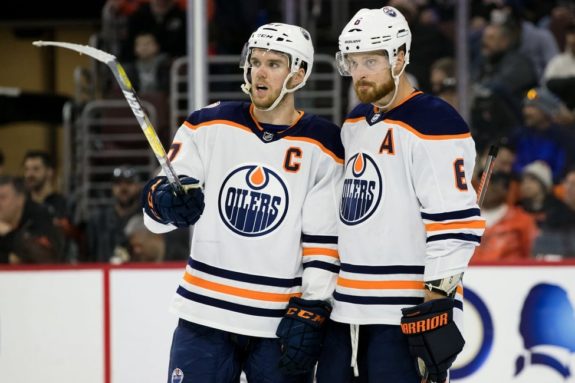
For an Oilers roster with tons of talent up front, the question remains: what went wrong last year and what steps will need to be taken to succeed in the upcoming season?
Production from Depth
Without a doubt, the Oilers biggest issue was definitely their depth production. Outside of McDavid, Draisaitl, and Ryan Nugent-Hopkins, the offense was nearly non-existent. The fourth-highest scoring forward was Alex Chiasson at 38 points, who was on a league-minimum contract.
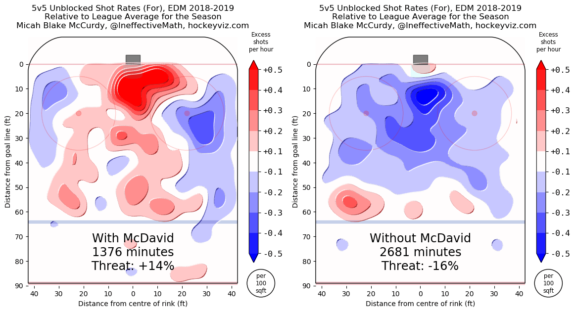
5v5 Unblocked Shots For With Connor McDavid vs. Without Connor McDavid (HockeyViz.com)
As shown by the visual, the red zone indicates that the offense is above league average whereas the blue zone indicates offense below league average. The Oilers are threatening offense when McDavid is on the ice, however, become a significantly below-average offense when he is not on the ice. This lack of presence from the depth was by far the biggest factor to the Oilers’ downfall.
Related: Chiarelli Has Stripped Team of Scoring Depth
To combat this issue, new general manager Ken Holland went through with numerous moves to bolster the offense. The most significant being the acquisition of Calgary Flames forward James Neal for Milan Lucic. Neal struggled immensely in a bottom-six role with the Flames last season, only putting up 19 points and only 7 goals in 63 games.
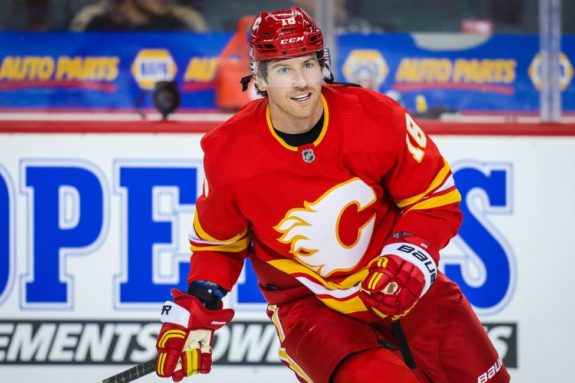
The hope is that Neal will thrive when given the opportunity to play with some of the best players in the league. This will, in turn, give him more offensive opportunities in hopes of hitting the 30-goal plateau again. Some other key forward acquisitions have been Joakim Nygard, Riley Sheahan, and Markus Granlund.
Overall, the Oilers did a good job at filling up some holes, however, they still have some more work to do. The management acknowledging this was a problem though is a step in the right direction.
Goaltending Consistency
Another massive issue last season was in between the pipes. Goaltenders Mikko Koskinen and Cam Talbot both had disappointing seasons. Koskinen went 25-21-6 and after a promising hot start, he tumbled and finished with a .906 save percentage.
Related: Mikko Koskinen’s Consistency Is Key to Oilers Success
Talbot, on the other hand, has significantly gotten worse with each year he’s been on the Oilers. The 2016-17 season was where Talbot shined. He started 73 times, totalling a 42-22-8 record along with a .919 save percentage. The organization had their mind set that he was the starting goalie going forward. Yet he dropped off the year after, putting up a 31-31-3 record and a .908 save percentage.
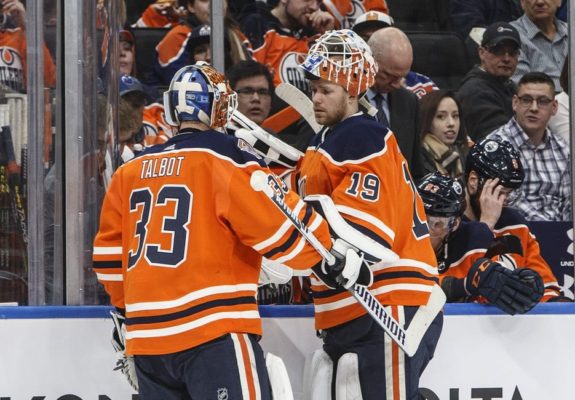
After this season, Koskinen was brought in to possibly light a fire under Talbot and give him some competition. This ended poorly, with Talbot getting traded to the Philadelphia Flyers at the trade deadline after going 10-15-3 with a .893 save percentage with the Oilers.
Having your best goaltender finish with a .906 save percentage, a losing record, and a 2.93 goals-against average is simply not enough to get your team back into the playoffs. A key reason why the Oilers were so successful in 2016-17 was largely in part due to Talbot’s emergence as a clear starting goaltender.
Mike Smith was acquired in free agency after finishing the year with a 23-16-2 record, a 2.72 goals-against average and a .898 save percentage with the Flames. If the Oilers are to make the playoffs, one of Koskinen or Smith need to step up and take the starting job. A 1A/1B system where both goalies play at a league-average level is not going to be enough.
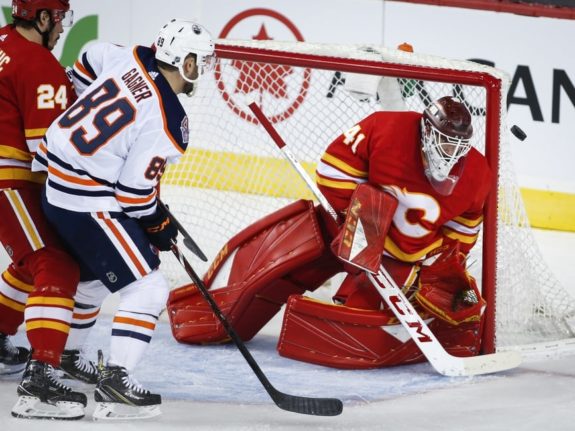
Regression from Playoff Teams
Sometimes in life, it’s not always how good you are, but how good your competition is. You can make all the positive changes you want, but in the end, if your competition makes those same changes, you’re not going anywhere.
This is the case in the Pacific Division. The Flames absolutely broke out last year as a clear cut contender, putting up a record of 50-25-7. Unless Matthew Tkachuk doesn’t sign, this is one team that is locked to make the playoffs. Same case with the Vegas Golden Knights. They added star forward Mark Stone at the trade deadline only to fall short to the San Jose Sharks in seven games. As a still very young team with prospects such as Cody Glass potentially making the roster, this is another safe lock for the playoffs.
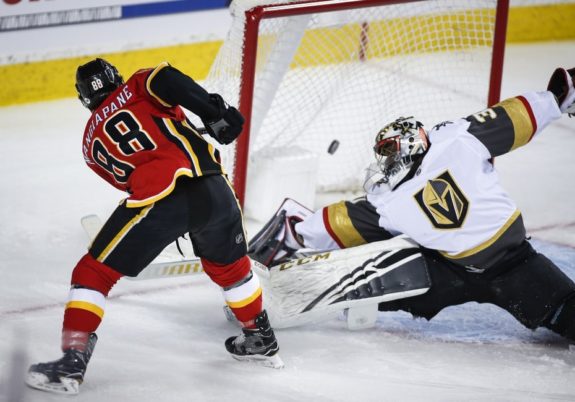
Fortunately for the Oilers, the Anaheim Ducks and Los Angeles Kings have made their visions of rebuilding very clear and won’t remain a threat all season of taking a playoff spot. The Arizona Coyotes and Vancouver Canucks however, look to be on the rise. The Coyotes missed the playoffs by four points last season, the least of any team that missed out in the west. They will get Nick Schmaltz and Antti Raanta back from injury for this season as well.
On the Canucks side, they get the sophomore season of emerging superstar Elias Pettersson. Along with Pettersson, Brock Boeser, Bo Horvat, and Quinn Hughes look to continue their development and could potentially make a push for the playoffs.
Related: 4 Canucks Predictions For 2019-20 Season
This leaves the Oilers in a challenging situation to get into the playoffs. With numerous teams in the division looking to make it in, they will need to bank on the regression of the Sharks. The Sharks recently took a significant hit to their defensive and offensive depth, losing out on players such as Justin Braun, Joe Pavelski, and Joonas Donskoi. While the core is still filled with two superstar defensemen in Erik Karlsson and Brent Burns, losing the aforementioned key names will prove an obstacle in the Sharks success.
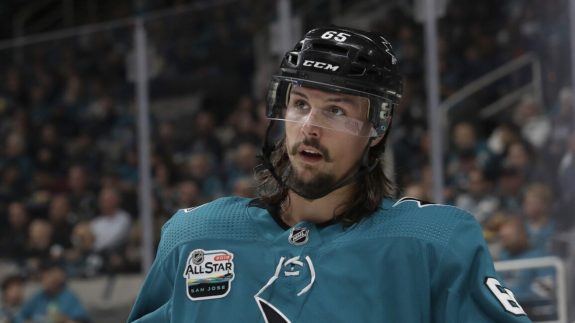
They could also benefit from the regression of the Winnipeg Jets for a wild card spot. The Jets had easily the biggest teardown of the off-season. They traded Jacob Trouba, allowed Tyler Myers to walk in free agency, have yet to sign Patrik Laine and Kyle Connor to contracts, and could potentially lose Dustin Byfuglien to retirement. While Laine and Connor will likely come to terms with a deal if Byfuglien retires, losing three top-four defensemen will almost certainly leave the Jets out of the playoffs.
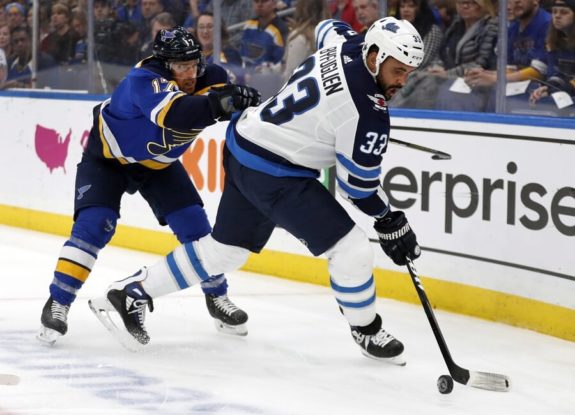
The regression of the Jets out of the playoffs would leave a wild card spot wide open provided the St. Louis Blues, Nashville Predators, Colorado Avalanche, and Dallas Stars make the playoffs again.
For the Oilers to make the playoffs, they’ll need their talent to step up and a little bit of luck on their side to squeeze in. However, playoffs don’t necessarily have to be accomplished to be successful. Simply making significant progress on the mere 79 points that they had last season will be plenty to have a positive outlook on this upcoming season.